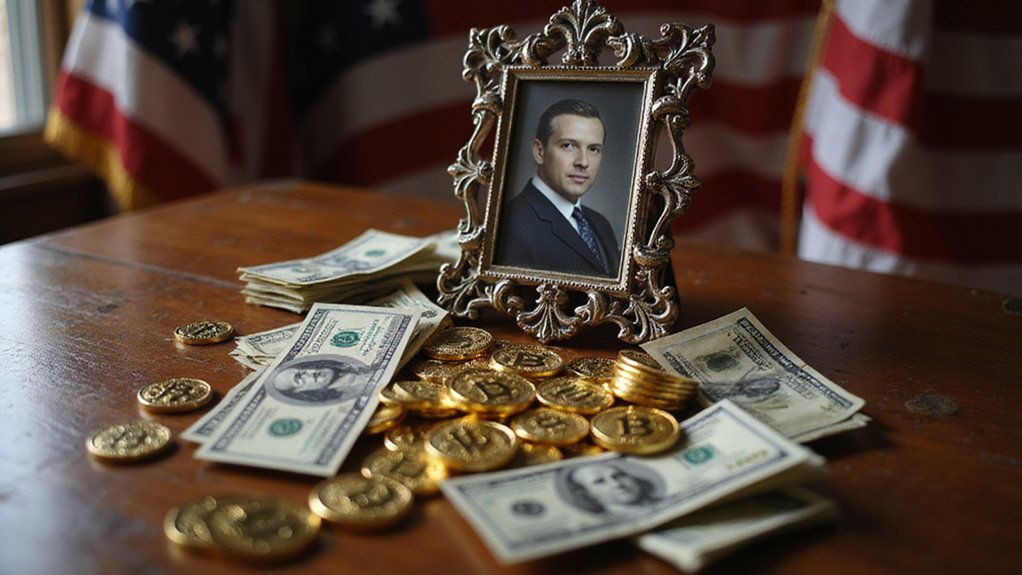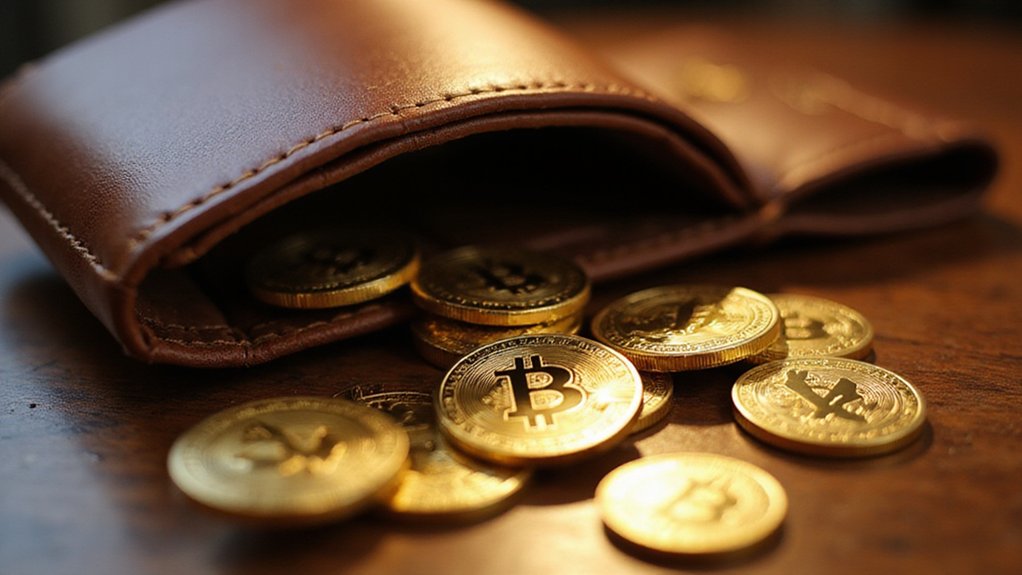While the cryptocurrency world has witnessed countless ventures promising to revolutionize finance, few have arrived with the audacity—or familial star power—of World Liberty Financial, the Trump family’s foray into digital assets that launched in October 2024 with all the subtlety of a gold-plated blockchain.
The venture operates through a triumvirate of products: the WLFI token, USD1 stablecoin, and a publicly traded company designed to hold WLFI tokens—because apparently one path to riches isn’t enough when you can engineer three. The USD1 stablecoin has already captured $2.2 billion in market capitalization, while the combined enterprise raised at least $2 billion through token sales and public offerings by mid-2025. Operating within a stablecoin market segment valued at $125 billion and projected to reach $2.8 trillion within five years, the venture positions itself to capitalize on rapidly expanding digital asset adoption.
Perhaps most intriguingly, ALT5 Sigma Corp., a former biotech firm transformed into crypto investment vehicle, is raising $1.5 billion specifically to purchase WLFI tokens. This structure allows traditional investors to gain exposure to crypto assets through conventional stock ownership—a financial Matryoshka doll that would make even seasoned Wall Street engineers pause. The strategy mirrors the approach popularized by Michael Saylor’s MicroStrategy, where public companies serve as proxies for cryptocurrency investment.
The business model centers on a familiar yet effective premise: invest stablecoin reserves in short-term U.S. treasuries, generating approximately 4% annual yield on the $2 billion backing. The Trump family retains a significant WLFI stake while collecting 75% of token sale proceeds—a compensation structure that would make venture capitalists weep with envy. The USD1 stablecoin has gained significant traction through a strategic partnership with Binance, which received a $2 billion investment from an Abu Dhabi venture firm.
Critics have dubbed the mechanism an “infinite money glitch,” questioning the sustainability of issuing new shares to acquire additional assets. The governance structure raises eyebrows too, with Eric and Don Jr. Trump leading operations alongside crypto entrepreneurs Chase Herro and Zak Folkman, while WLFI token holders receive promised governance rights of questionable practical significance.
Financial experts warn that this share issuance strategy potentially violates core finance principles, creating systemic risk concerns. The WLFI tokens, set to become publicly tradable by September 2025, reportedly achieved a $20 billion combined market valuation—a figure that either represents remarkable innovation or spectacular financial alchemy, depending on one’s tolerance for monetary experimentation wrapped in political celebrity.









